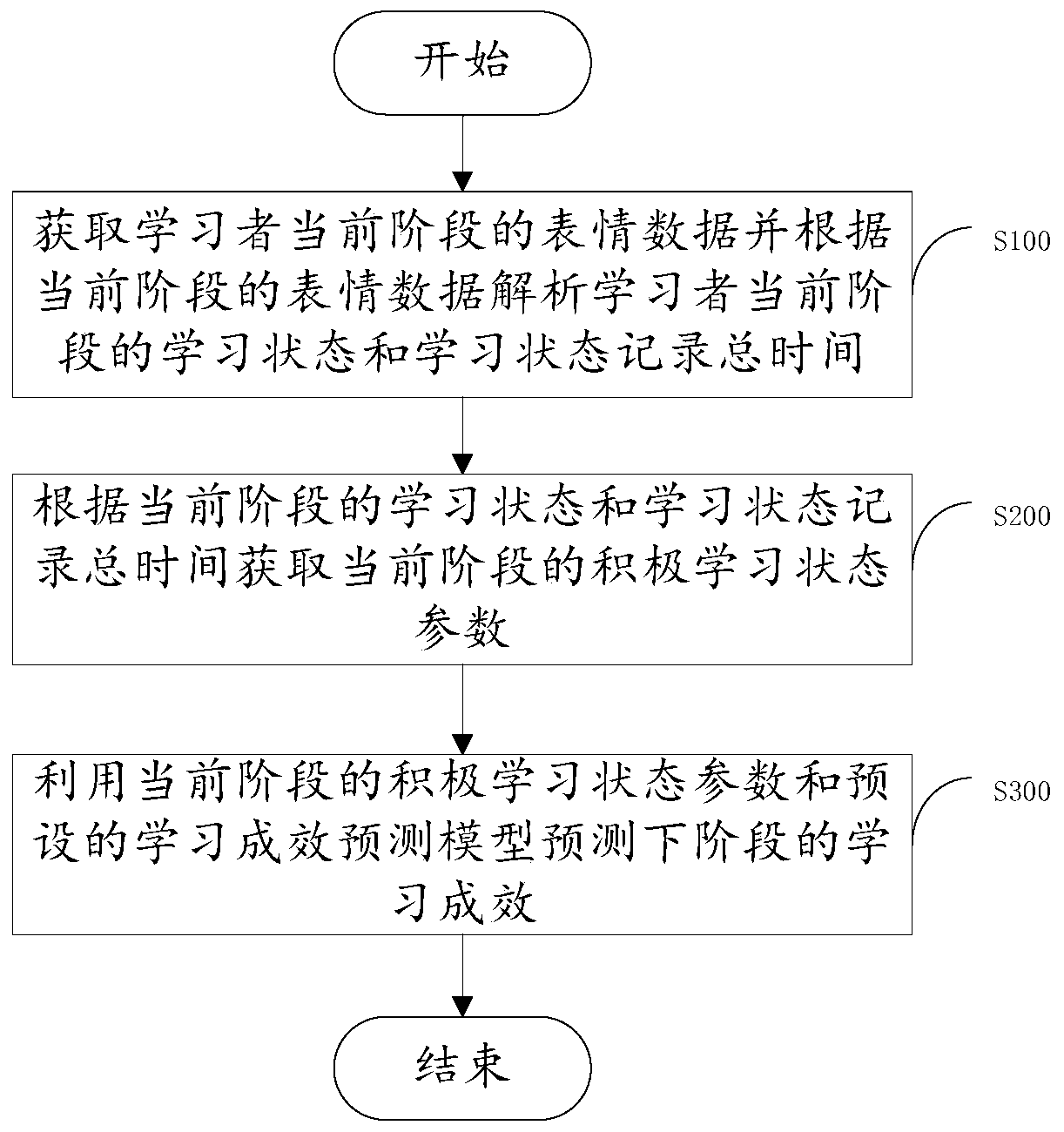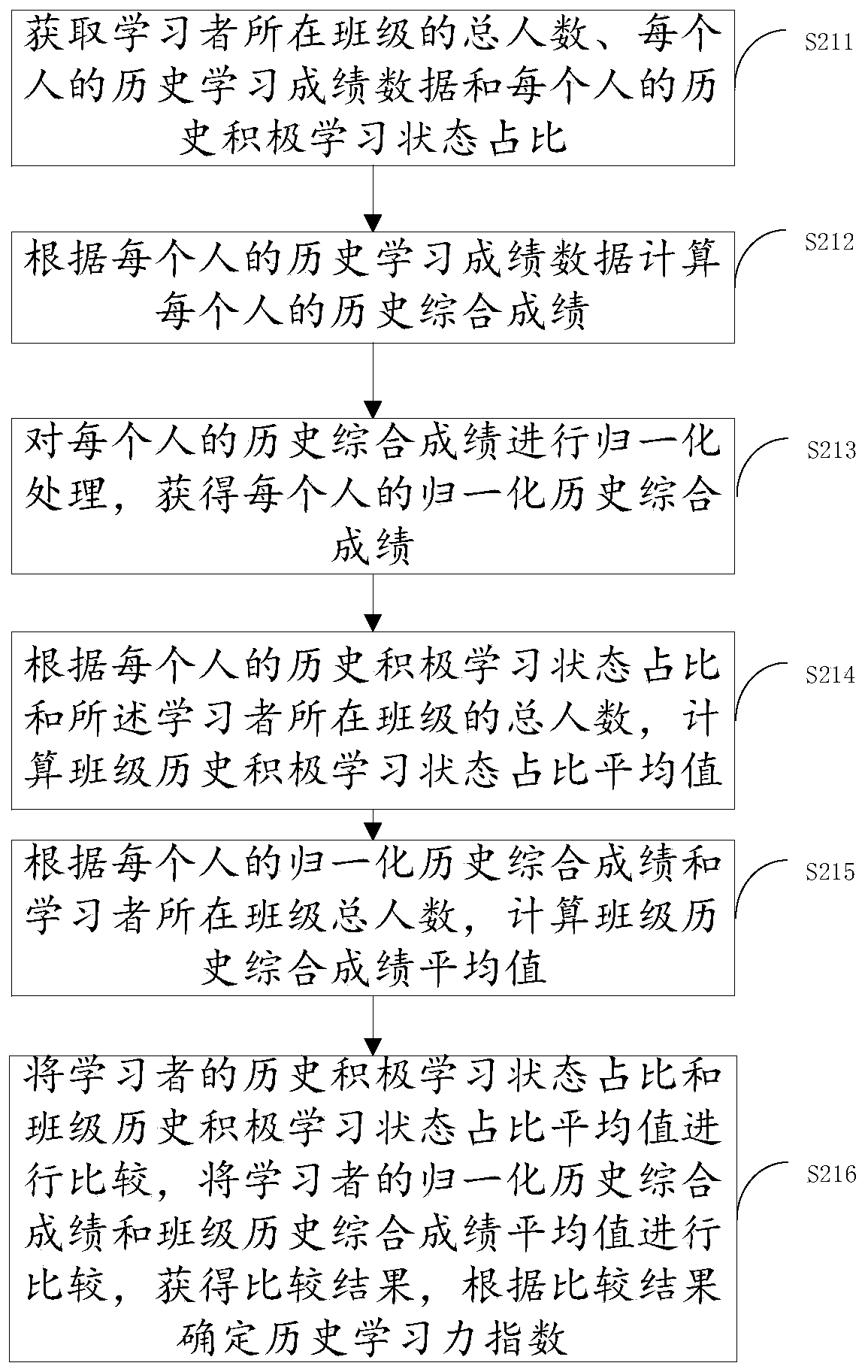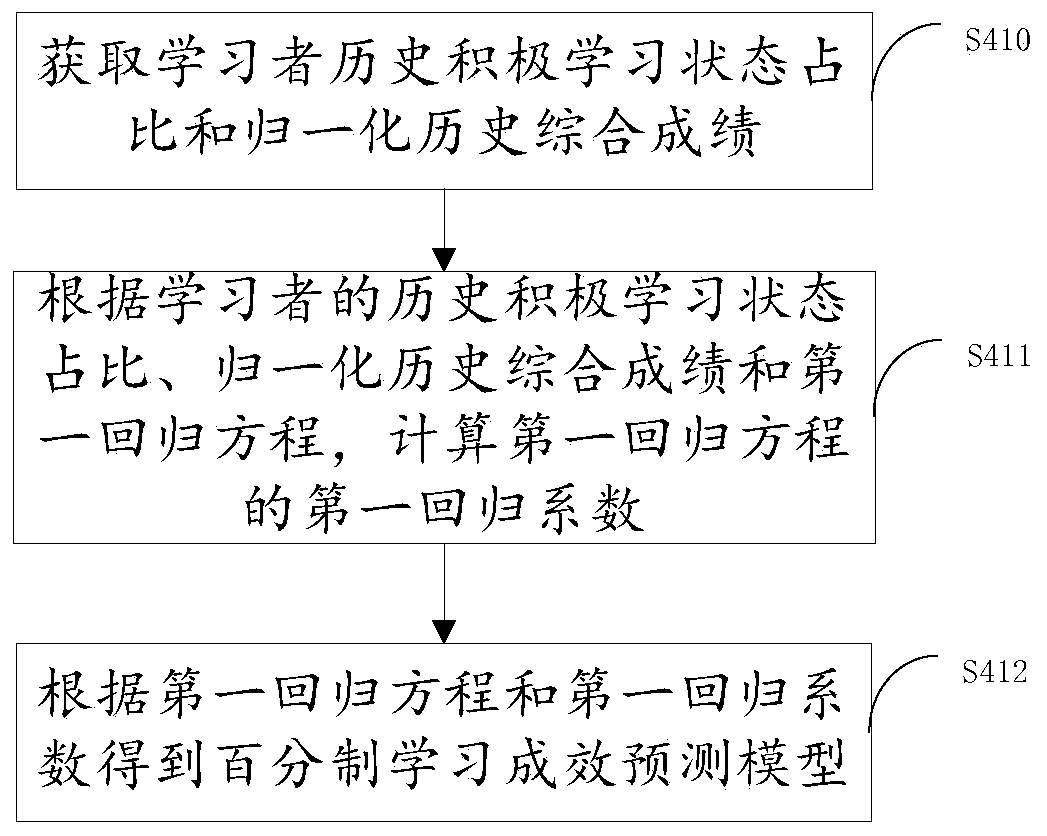Learning effect prediction method and system
A prediction method and technology of effectiveness, applied in the field of educational informatization, can solve problems such as strong subjectivity and inaccurate prediction results
- Summary
- Abstract
- Description
- Claims
- Application Information
AI Technical Summary
Problems solved by technology
Method used
Image
Examples
Embodiment 1
[0070] With the in-depth development of emotion and cognition research, compared with explicit behavior data, emotional indicators are more in line with learners' learning performance. In the field of learning science, the emotional state is usually divided into two dimensions, namely, the emotional index that reflects the positive and negative emotions and the arousal that describes the degree of emotional arousal. As the main carrier of emotional information, facial expressions can be used to infer the emotional state of others during the learning process, thereby inferring their learning effects.
[0071] Please see figure 1 , figure 1 A flow chart of a method for predicting learning effectiveness provided by the embodiment of the present application; as an example, the method can be implemented with a computer device as a carrier, and the method includes the following steps:
[0072] Step S100: Obtain the expression data of the learner at the current stage and analyze th...
Embodiment 2
[0174] The embodiment of the present application also provides a learning effect prediction system, such as Figure 7 as shown, Figure 7 A structural block diagram of a learning effectiveness prediction system provided by the embodiment of the present application, the system includes:
[0175] The expression data receiving and parsing module 600 is used to obtain the historical expression data of the learner's current stage and analyze the learning state of the learner's current stage and the total time of learning state recording according to the historical expression data of the current stage;
[0176] The learning state processing module 700 is used to obtain active learning state parameters according to the learning state of the current stage and the total time of learning state recording;
[0177] The learning effect prediction module 800 is configured to use the active learning state parameters of the current stage and the preset learning effect prediction model to pre...
Embodiment 3
[0204] This application also provides an embodiment of using the above method to predict the learning effect, as follows:
[0205] Step 1: Parse expression data:
[0206] Through the calculation and processing of expression data, the active learning states obtained by analysis are divided into three types, S p ={S p1 , S p2 , S p3}; where, S p1 For focus, S p2 for thinking, s p3 For understanding; the passive learning states obtained by analysis are divided into 3 types, S d ={S d1 , S d2 , S d3}; where, S d1 for confusion, s d2 for bored, s d3 for wandering.
[0207] Determine T 1 The time period is 40 minutes; S p1 Appears for 10 minutes, S p2 Appears for 6 minutes, S p3 Appears for 10 minutes; S d1 Appears for 6 minutes, S d2 did not appear, S d3 Appears for 8 minutes.
[0208] According to formula S p (k) m =T sp / T, the proportion of the learner's active learning state in the course is 0.6; the proportion of the passive learning state is 0.4; the h...
PUM
 Login to View More
Login to View More Abstract
Description
Claims
Application Information
 Login to View More
Login to View More - R&D
- Intellectual Property
- Life Sciences
- Materials
- Tech Scout
- Unparalleled Data Quality
- Higher Quality Content
- 60% Fewer Hallucinations
Browse by: Latest US Patents, China's latest patents, Technical Efficacy Thesaurus, Application Domain, Technology Topic, Popular Technical Reports.
© 2025 PatSnap. All rights reserved.Legal|Privacy policy|Modern Slavery Act Transparency Statement|Sitemap|About US| Contact US: help@patsnap.com



